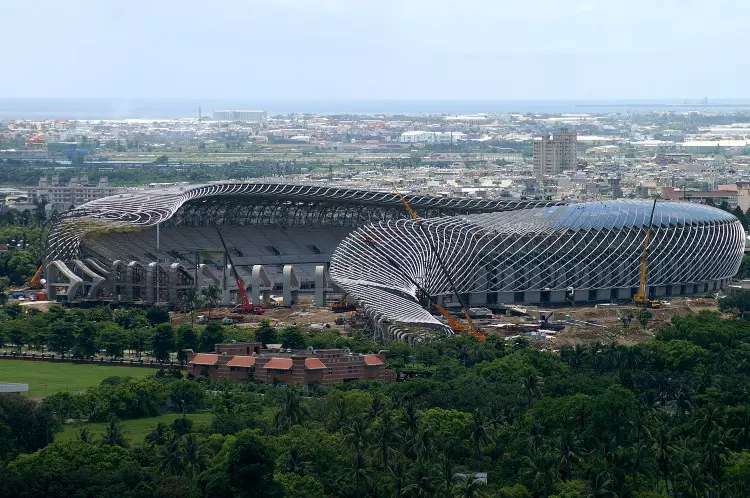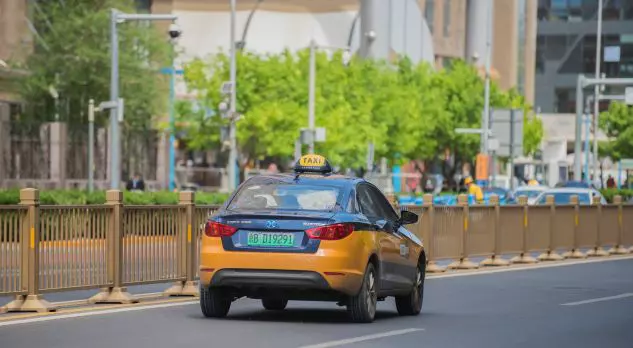As global awareness of climate change and environmental sustainability grows, industries worldwide are being called to rethink their practices and adopt more sustainable solutions. One area where this shift is gaining momentum is in the world of sports, particularly with the construction and operation of sports stadiums. The global sports sector is believed to be responsible for approximately 350 million tonnes of CO2e. Each year, the industry of football produces up to 66 million tons of carbon dioxide, the same amount as the whole of Austria. The bigger the tournament is, the higher the emissions. Large events like the FIFA World Cup and the Olympic Games require a significant amount of new infrastructure to be built in host countries every four years. Depending on the legacy concept of the operator or host city, some of the infrastructure built for such large-scale events (e.g., stadiums) ends up underutilized in the years following the event. Common legacy issues include the stadiums’ size/capacity (i.e., too large to be used outside the main event), limited economic and/or social impact due to insufficient or lack of prior planning for legacy and operational creativity for the venue post-event.
The environmental impact of traditional sports stadiums is undeniable. These venues require significant energy to power lighting, scoreboards, HVAC systems, and concessions. They also consume large amounts of water for landscaping, cooling systems, and sanitation and generate vast amounts of waste.
Stadiums—these massive structures, which often host tens of thousands of spectators—are beginning to embrace greener alternatives, transforming into models of sustainability. The sports world is responding to the climate crisis by exploring ways to minimize ecological footprints. Sustainable stadiums focus not only on reducing energy consumption but also on adopting a holistic approach that includes waste management, water conservation, promoting sustainable travel options for fans, and integrating the local community. The global sports community is realizing that embracing sustainability is not just a responsibility—it also presents an opportunity to innovate, enhance fan experiences, and create long-term cost savings.

Key features of sustainable stadiums
Energy efficiency. Energy consumption is one of the most significant aspects of any stadium’s environmental impact. To reduce this, many modern stadiums are incorporating energy-efficient technologies such as LED lighting, high-performance insulation, and advanced HVAC systems. Some stadiums, like The Soccer stadium in Johannesburg, have installed solar panels to generate renewable energy, while others use geothermal systems to regulate temperature more efficiently.
A growing trend in sustainable sports venues is the implementation of energy-generating features. For example, some stadiums are experimenting with piezoelectric technology, which harvests energy from the movement of fans to power various systems within the venue.
Water conservation. Water usage is another area where sports venues are making strides in sustainability. Many stadiums now use rainwater harvesting systems to collect and store water for irrigation, reducing the need to draw from local water supplies. Water-efficient fixtures, such as low-flow toilets and faucets, are being installed to reduce water consumption in bathrooms and concession areas.
The Levi’s Stadium in Santa Clara, California, home to the San Francisco 49ers, is a prime example. The stadium uses recycled water for irrigation and cooling, helping save millions of gallons of water each year.
Waste reduction and recycling. Waste management is a significant concern at large venues, where food and beverage sales can generate large volumes of waste. Sustainable stadiums are working to minimize waste through composting, recycling programs, and waste diversion initiatives. Some venues have even eliminated plastic straws, opting for compostable or recyclable alternatives for food packaging.
The Soccer stadium in Johannesburg, achieved zero-waste status during the 2010 FIFA World Cup by implementing robust recycling and composting programs. This shift has set a precedent for future sporting events, prioritizing waste reduction.
Use of sustainable or reused materials. Another hallmark of a sustainable stadium is the use of eco-friendly materials during construction. Instead of traditional, resource-intensive materials like concrete and steel, many stadiums incorporate recycled, low-impact materials into their design. The FNB Stadium in South Africa, for instance, used locally sourced, sustainable materials to minimize transportation emissions and reduce its carbon footprint.
Additionally, the interior design and furnishings in sustainable venues are often made from renewable resources or repurposed materials. This approach significantly reduces both construction and ongoing maintenance environmental impacts.
Repurposing and redevelopment of sports facilities. Using technology to provide flexibility for existing infrastructure has proven to be effective in reducing carbon footprints compared to new construction.
The National Aquatics Centre in Beijing, China, is one such example. Equipped with technology to allow it to switch from the ‘Water Cube’ during the 2008 Olympics to the ‘ICE Cube’ for the 2022 Winter Games, it was reconfigured without needing to alter the structure itself. However, greater reductions could be achieved by developing venues designed from the start to be fully reusable or repurposed after the event.
Creating green spaces and promoting biodiversity. Sustainable stadiums are also integrating more green spaces into their designs. Green roofs, urban gardens, and open green areas are becoming common features, helping reduce the urban heat island effect and promote biodiversity.
The Bird’s Nest stadium in Beijing, for example, includes green spaces around the stadium to encourage environmental sustainability and foster community interaction.
Creating community hubs. Beyond sustainability and technology, modern sports venue architects are increasingly incorporating the “Third Place” concept. This concept refers to spaces that serve as community hubs beyond the home and workplace. Stadiums are now seen as year-round destinations for entertainment, leisure, and social interaction, rather than solely reserved for games. Architects integrate public parks, retail areas, and entertainment zones into the stadium infrastructure.
Optus Stadium in Perth, Australia, for instance, includes expansive public spaces with breathtaking views of the city skyline, making it a popular community gathering spot.

Real-world examples of sustainable stadiums
Several other sustainable stadiums exemplify these features.
The first example is Mercedes-Benz Stadium in Atlanta, which is the first stadium worldwide to be awarded the environmentally coveted Total Resource Use and Efficiency (TRUE) Platinum certification for its zero-waste efforts. It diverts 90% or more of its waste from landfills through recycling, waste reduction, material reuse, and composting. Mercedes-Benz Stadium has partnered with Second Helpings Atlanta to donate unused food from the stadium. The stadium is designed to be energy-efficient, reducing electricity use by 29%. It is equipped with solar PV panels that generate approximately 1.6 million kilowatt-hours of renewable energy per year—enough to power 9 Atlanta Falcons games and 13 Atlanta United matches.

The second example is Kaohsiung World Stadium in Taiwan. Built for the IX World Games, it is a prime example of a futuristic sports arena embracing green energy and sustainable architecture. The stadium boasts total sustainability, thanks to materials like wood and photovoltaic panels. The solar panels provide 75% of the stadium’s energy needs and sell approximately 1.14 million kWh of energy to third parties.

The third example is Seattle’s Climate Pledge Arena, a global trailblazer as the world’s first net-zero certified stadium. This venue showcases the possibilities that arise when environmental commitment meets innovation. The arena uses a “Rain to Rink” system that collects rainwater in a cistern to make ice for hockey. Climate Pledge Arena is powered entirely by renewable energy, and every detail— from electrified kitchens to waterless urinals—reflects its goal of eliminating fossil fuel usage and optimizing energy efficiency.

The fourth example is Stadium 974 in Qatar, a pioneering project in the field of sports architecture. Stadium 974 is the first fully demountable, transportable, and reusable stadium. While modular systems have a long history in construction, applying this concept to a large football stadium had never been done before. The stadium’s construction includes a highly repetitive grid of identical structural frames, supporting standardized components like bleachers, concourse slabs, and modules with pre-equipped containers. The stadium can be fully disassembled and reinstalled at another location or repurposed into smaller arenas, enabling the reuse of materials and reducing the lifetime carbon footprint.
The fifth example is Tottenham Hotspur Stadium in London, one of the most technologically advanced stadiums. It features a grass field that shifts to reveal an NFL pitch, and the floor can change to accommodate a boxing ring or a music stage. This innovative technology allows for floor changes while keeping the grass in perfect condition. The stadium utilizes solar panels, air-source heat pumps, waterless urinals, and low-flow fittings to minimize water consumption. It also implements a zero-waste-to-landfill policy, prioritizing recycling and reuse, including a reusable cup scheme. However, Tottenham Hotspur Stadium is not just a sports venue—it is evolving into a vibrant community hub. In addition to hosting football matches, the stadium includes restaurants, bars, and event spaces, ensuring it remains a lively destination even when no sporting events are taking place. The stadium also features community spaces for local residents, hosting various events, workshops, and activities that bring people together. By creating a welcoming environment, Tottenham fosters a sense of ownership and pride among community members.

The sixth example is Wörthersee Football Stadium in Klagenfurt, Austria. In September 2019, it hosted “For Forest – The Unending Attraction of Nature,” a temporary art intervention by Klaus Littmann and Austria’s largest public art installation. The installation transformed the stadium—often sparsely attended by spectators—into a native Central European forest, with nearly 300 trees carefully placed on the existing pitch. The purpose of the installation was to draw attention to environmental issues and serve as a warning that the natural world we take for granted might one day only be observed in specially designated places—much like animals in zoos today. “For Forest” included over 40 organizers and nearly 150 events that attracted over 40,000 visitors. It was listed among the best public art of 2019 by Artsy, Dezeen’s top 10 installations of 2019, designboom’s top 10 large-scale artworks of 2019, Hypebeast’s top 10 art moments of 2019, and the best photos of the art year 2019 by Monopol.

Photo from For Forest – The Unending Attraction of Nature; Gerhard Maurer
Benefits beyond the environment and future perspectives
The move toward sustainable sports venues offers several benefits that extend beyond environmental impact. These stadiums can drive long-term cost savings by reducing energy, water, and waste disposal expenses. Additionally, they can attract eco-conscious fans who appreciate sustainability and are more likely to support teams or events held in environmentally responsible venues. Sustainable stadiums also serve as powerful symbols of corporate responsibility and innovation. Moreover, they can become hubs for education and awareness, hosting events that engage the public in environmental, sport and cultural issues. Community outreach programs and partnerships with environmental organizations help amplify sustainability messages far beyond the stadium walls.


